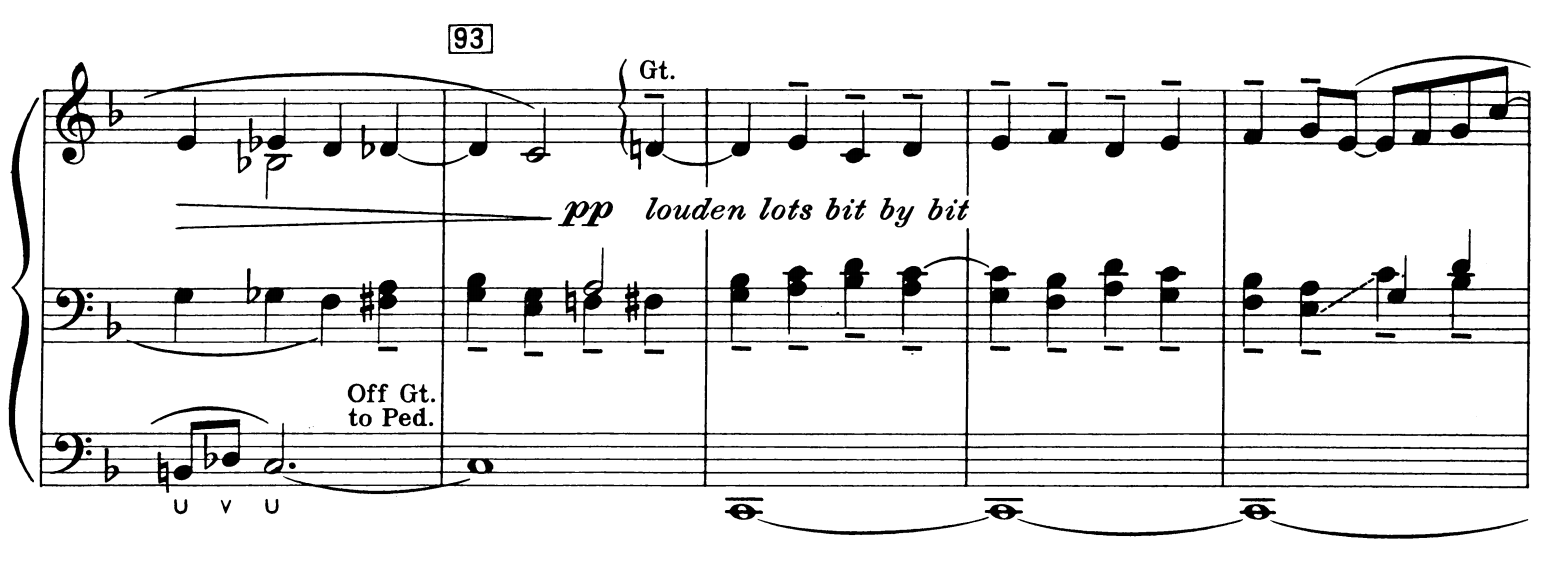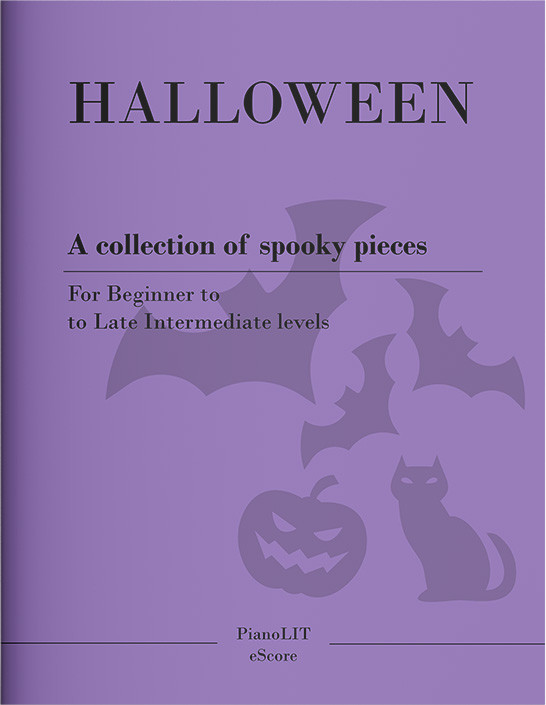Who is the craziest of them all?
The men on this list have created some beautiful and complex music, yet they were troubled souls, whose eccentricities and obsessions led to some decidedly odd behavior.
May 1, 2019 • 20 min read
8091

Want a heads up when a new story comes out?
It's common knowledge to associate musicians with odd behavior and eccentricity. But are truly artists more prone to mental illness? There is no real answer to this question but we can all admit some of them did show a more than just odd behavior which stunned many.
There's a fine line between genius and insanity. I have erased this line.
We have taken the liberty to list 10 of the most eccentric artists and the reason why they’ve been honored with a place in this list.
10. Kaikhosru Shapurji Sorabji
Sorabji was one of the 20th century's most prolific piano composers. He had a tendency to seclusion, and in the 1950s he moved from London to a remote village where he spent most of the rest of his life. His masterpiece is a four-hour piano work Opus Clavicembalisticum, credited as the longest piece in the piano literature. After few disgraced concerts of his work, Sorabji banned unauthorized performances of his music and isolated himself from the public world.
Of the Opus Clavicembalisticum itself, Sorabji wrote sternly: "The work is only intended for pianist-musicians of the highest order. Indeed, its intellectual and technical difficulties place it beyond the reach of any others - it is a weighty and serious contribution to the literature of the piano, for serious musicians and serious listeners only."
On its completion, Sorabji wrote: "With a wracking head and literally my whole body shaking as with ague I write this and tell you I have just this afternoon early finished Clavicembalisticum... The closing 4 pages are so cataclysmic and catastrophic as anything I've ever done - the harmony bites like nitric acid - the counterpoint grinds like the mills of God..."
9. Arnold Schoenberg
Revered as one of the most important composers of the 20th Century with his atonal music, Schoenberg suffered from triskaidekaphobia, the irrational fear of the number 13. He was born on September 13 and always considered the date of his birth an evil portent. When he noticed that the title of his work “Moses and Aaron” contained 13 letters, he crossed out the second “a” in Aaron to make it 12. Irony wants it that he would die on July 13th, a Friday foremost, just as he had feared.
8. Percy Grainger
Grainger was an Australian composer, recognized for his Anglophile and white supremacist behavior. He was convinced of the superiority of British and Nordic culture. He felt so strongly about not using words with Romance roots that he replaced all of the common Italian terms in his music. So instead of the widely used “molto crescendo” Grainger would write “louden lots”; instead of “clarinet quartet” he would write “clarinet foursome”; and “listen-host” instead of “audience”.

He would often pick garbage wearing a full tux with a top hat because he was looking for pieces he could use to make recycled instruments. It goes without saying that he had to explain himself to the police multiple times, after being called by worried bystanders.
He liked to go for a run before his solo piano concerts because of the energy it would give him. He would sometimes run from one town to the next in his concert dress to arrive just in time to play.
7. Alexander Scriabin
Russian composer, Scriabin had synesthesia, a disorder that gave the victim the ability to see colors in everything. Different sounds, tastes, touches were all associated with a particular blend of colors. Throughout the course of his life, Scriabin tried to search for God and soon believed that he was the incarnation of Jesus. He said he could walk on the waters of Lake Geneva and prove this. His attempt resulted in having to be rescued from drowning.
Late in his career, he began to compose a work called “Mysterium”, a sort of festival, engaging all the senses, and taking place in the Himalayas. There would be bells and perfumes, and ultimately, humanity would enter a new plane of existence where even gender would be abolished. Scriabin decided that this might be too much to throw at humanity without warning, so he created the “Prefatory Act”, which was basically a less grand version of Mysterium.
6. Hans Rott
Rott was an Austrian composer and organist, who wrote a popular first symphony and received high praise in his time from Gustav Mahler and Anton Bruckner. Rott's mind snapped in October 1880, whilst on a train journey. He was reported to have threatened another passenger with a revolver, claiming that Brahms had filled the train with dynamite. Rott was committed to a mental hospital and by the end of 1883 a diagnosis recorded "hallucinatory insanity, persecution mania—recovery no longer to be expected." He died when he was only 25.
5. Lord Berners
Gerald Tyrwhitt, better known as Lord Berners, displayed an eccentric behavior since a young age. As a child, having heard that if you throw a dog into water it will learn how to swim, he threw his mother's dog out of the window on the grounds that if one applies the same logic it should learn how to fly. He used to catch pigeons, paint them into various colors and make them wear masks. The composer also had a pet giraffe for a short period of time. In between such eccentricities, however, he wrote some great music. As well as piano works, he composed music for ballets and wrote songs and film scores.
Berners did his composing at a grand piano adorned with a beer mug that played the National Anthem when lifted. He could also compose on the move after he installed a clavichord in his Rolls-Royce – the same Rolls-Royce, in fact, that Berners liked driving around in wearing a pig’s-head mask to frighten the locals.
His own man to the end, Berners wrote his own epitaph, which appears on his gravestone at Faringdon House: Here lies Lord Berners / One of the learners / His great love of learning / May earn him a burning / But, Praise the Lord! / He seldom was bored.
Berners himself once said that he would have been a better composer if he had accepted fewer lunch invitations.
4. Wolfgang Amadeus Mozart
Though Mozart needs no introduction due to his high musical achievements, his distinctive character is not known to everyone. He had an obsession with defecation and farting, formally known as scatology. Evidence of scatology exists in 39 of 371 letters (10.5%) written by Mozart. When all letters referring to anal matters are added up, the total number of vulgar letters rises to 12.9%. As an example, in one letter written to his cousin, Mozart overly repeats the word muck: “Muck! – Muck! – Ah, muck! Sweet word! Muck! Chuck! That too is fine. Muck, chuck! – muck! – suck – o charmante! Muck, suck! That's what I like! Muck, chuck and suck! Chuck muck and suck muck!”
In addition to uttered vulgar platitudes, Mozart had a hyperactive behavior, with frequent facial grimaces, inadvertent repetitive movements of hands and feet, and jumping for no reason.
Less well known, however, is that Mozart liked to imitate a cat. He’d be rehearsing an opera with his singers, when he’d suddenly grow bored and leap over tables and chairs, meowing and turning somersaults. He even wrote a comic song, in collaboration with other composers, in which a woman responds to her husband’s questions with nothing but meows until the poor man has no choice but to break down and meow too.
Nannerl, Mozart's sister, wrote the following about her brother: “This same being who, considered as an artist, had reached the highest stage of development even from his very earliest years, remained to the end of his life completely childish in every other aspect of existence. Never, until he died, did he learn to exercise the most elementary forms of self‐control”.
3. Anton Bruckner
Bruckner was the composer of some of the 19th century's greatest, grandest and most ambitious symphonies but became also renowned for his weird tendencies. First and foremost his strange love and affection for human skulls. There are accounts of Bruckner having "fingered and kissed the skulls of Beethoven and Schubert" when their corpses were exhumed and moved to a different cemetery. This strange affection for death was also displayed when his mother died. Bruckner commissioned a photograph of her on her death bed and kept the photo of her corpse in his teaching room.
He had a mania for counting the bricks and windows of buildings, and for counting the numbers of bars in his gargantuan orchestral scores, making sure their proportions were statistically correct.
In his diaries he kept lists of the girls he fancied who were usually in their late teens. He even went as far as proposing to one of his daughter’s teenage friend. The cantata “Entsagen” was composed of grief after she rejected his proposal.
2. Carlo Gesualdo
Carlo Gesualdo is the Italian prince and composer who at the end of the 16th century wrote some of the most chromatic vocal music ever conceived. He also passed to history as one of the most intriguing and unusual figures in musical history.
Gesualdo murdered his wife and lover after catching them in the act of infidelity. He stabbed them to death and dragged the mutilated bodies outside so that the town could see the punishment for their betrayal. The story of these murders was highly publicized but, as shocking as this can be, noblemen of the time were virtually duty-bound to kill their wife once they had been found guilty of adultery. Though that doesn't make Gesualdo's crime any less shocking.
It's also allegedly said that Gesualdo scrutinized his second son's facial features and decided that the baby bore a closer resemblance to his dead wife's lover than to himself, and so he had the infant's cradle hung from the ceiling and swung so violently that the child died.
Because of his noble status, he was not incarcerated for the crime but had to flee in northern Italy where he married again. The relationship between Gesualdo and his new wife was not good. Gesualdo reportedly engaged in abusive behavior and found sexual satisfaction elsewhere.
The final stage of Gesualdo’s short life was even ghastlier than the beginning. Two of his servants were tried for witchcraft and under torture confessed to had given the Prince potions of menstrual blood. One of them, after having sexual intercourse with him, said she had inserted a piece of bread into her vagina and then served it to him. Both women were later imprisoned in Gesualdo's own castle.
Later in life, Gesualdo suffered from depression. He had himself beaten daily by his servants to alleviate his affliction by demons and engaged in a relentless correspondence with Cardinal Federico Borromeo to obtain skeletal remains of his uncle Carlo Borromeo, with which he hoped to obtain healing for his mental disorder and possibly absolution for his crimes.
Gesualdo’s greatest work is probably the madrigal “Moro, lasso, al mio duolo.”
I die, alas, in my suffering,
And she who could give me life,
Alas, kills me and will not help me.
O sorrowful fate,
She who could give me life,
Alas, gives me death.
1. Erik Satie
When Erik Satie died in 1925, those closest to him were shocked to discover that the eccentric French composer had lived in a filthy room to which he hadn’t admitted a single visitor in over 27 years. In his apartment, he had a collection of over 100 umbrellas and newspapers that almost completely buried its most striking feature: two grand pianos placed one on top of the other, the upper instrument used as storage for letters. It is a mystery about his life is how he managed to keep up appearances, emerging from his squalid room so immaculately groomed and always wearing one of seven identical grey suits.
He was a relatively bad pianist, with reports from teachers and peers suggesting that he was gifted, but desperately lacking in sight-reading skills and motivation. Despite this, his piano composition the Gymnopédies suite has become a classic. The pieces' title came from a made-up profession Satie invented for himself when asked what his occupation was. "I am a gymnopedist," he said. The following year, Satie gave that title to three short piano pieces.
Satie composed a piece entitled "Vexations", where the theme is repeated 840 times in immediate succession. This piece consists of a single bass phrase to be accompanied with chords notated above it. Text instruction above the staff reads as follows:
“In order to play the theme 840 times in succession, it would be advisable to prepare oneself beforehand, and in the deepest silence, through serious immobility.”
Satie was the main composer of a religion called the Mystical Order of the Rose and Cross of the Temple and Grail. During his time, he composed several pieces that utilized free-flowing harmony based on nature and emotion. This era would go on to heavily influence the work of Olivier Messiaen and other mystic composers. He later founded his own sect of occultism named Église Métropolitaine d’Art de Jésus Conducteur. To this day, Satie remains the sole congregant of the church.
Satie's friends called him "Mr. Poor", since he lived a life in poverty, continuing to experiment in avant-garde cabarets and theaters. He carried a hammer everywhere he went...just in case. On his long walks back to his impoverished industrial suburb in Paris, shielded by his ubiquitous umbrella, Satie would keep a hammer in his coat to defend himself against potential assailants.
Satie's diet was extremely bizarre as well, as described by himself:
“My only nourishment consists of food that is white: eggs, sugar, shredded bones, the fat of dead animals, veal, salt, coconuts, chicken cooked in white water, moldy fruit, rice, turnips, sausages in camphor, pastry, cheese (white varieties), cotton salad, and certain kinds of fish (without their skin). I boil my wine and drink it cold mixed with the juice of the Fuchsia. I have a good appetite, but never talk when eating for fear of strangling myself.”
Satie was often criticized for not having the ability to write music with any form. In response, he composed a work called “Three pieces in the form of a pear.” And it is, of course, split into seven parts.
•••
What is there left to say after analyzing such interesting individuals? Art and eccentricity go hand in hand and in some cases, they mix, making it difficult to discern one from the other.


